#1 Lofoten is stunningly beautiful any time of the year.
The Lofoten Islands are beautiful all year, but visiting in summer or winter is a completely different experience. And it’s not just about the weather and temperature.
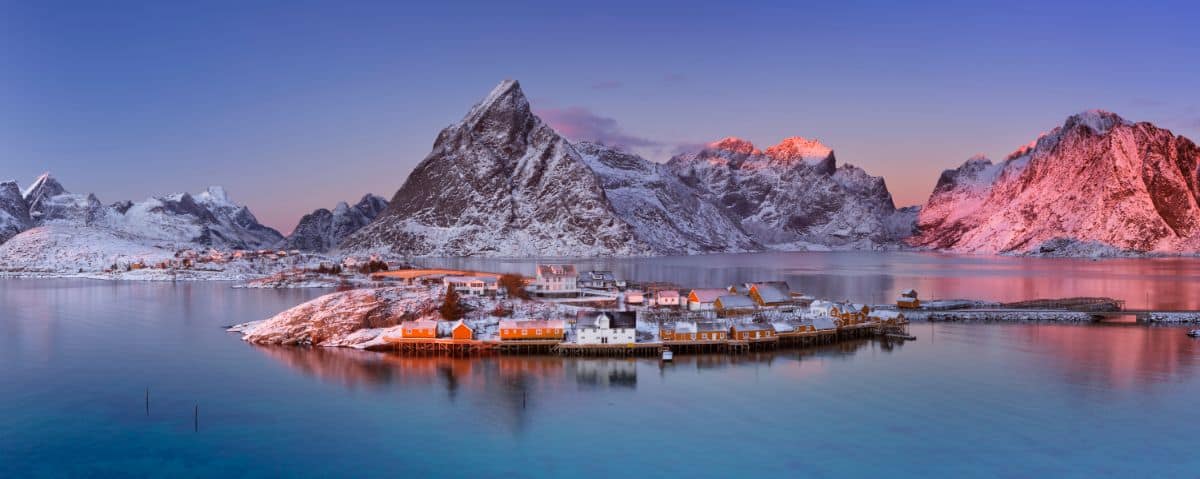
Beautiful winter morning light illuminating the Sakrisøy island.
Visiting Lofoten In The Summer
Summer is the peak tourist season in Lofoten, and the islands draw travelers from all over the world. The long daylight hours and the midnight sun provide plenty of time for exploration, and many tourists take advantage of this.
This means you can expect larger crowds, especially in the most popular spots like Reine, Henningsvær, and Å.
Another aspect to consider is the cost. As one of Norway’s most famous tourist destinations, prices in Lofoten can be on the higher side, particularly during the summer months. It’s a good idea to book your stay well in advance to secure the best deals and ensure you have a place to stay.
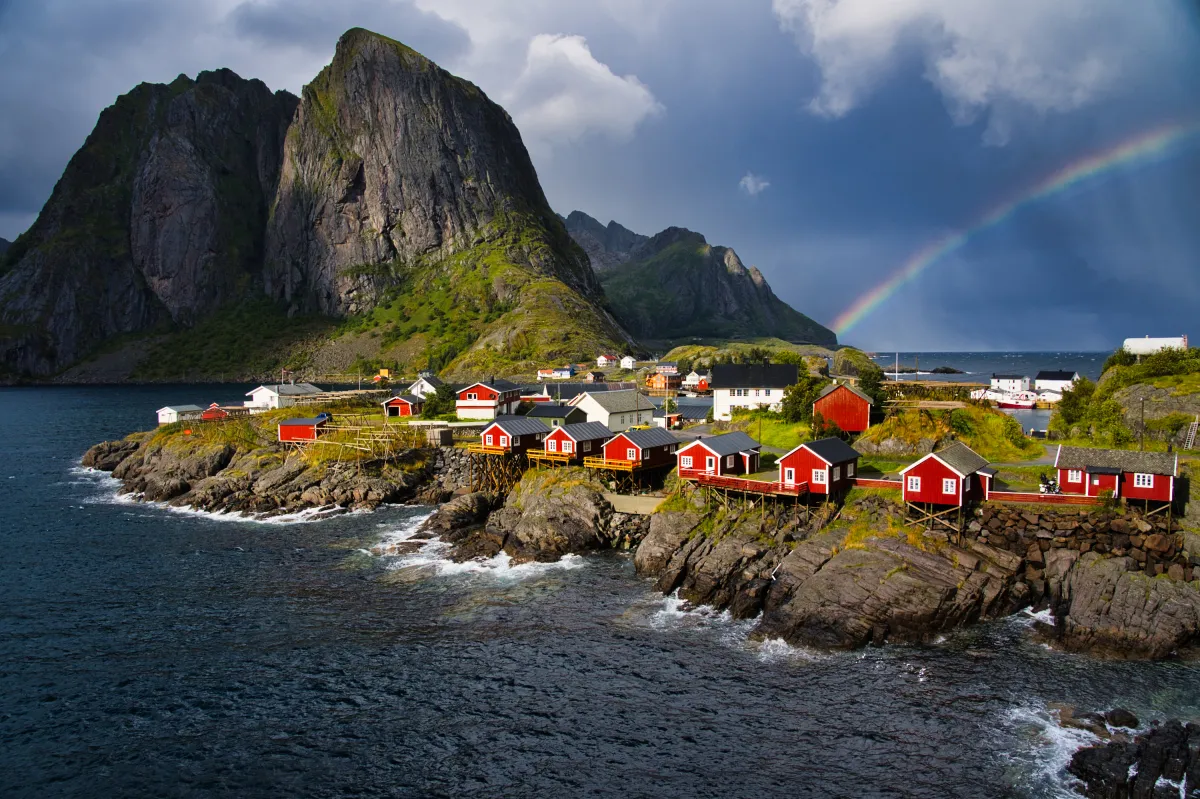
The iconic picture of Eliassen rorbuer taken in August
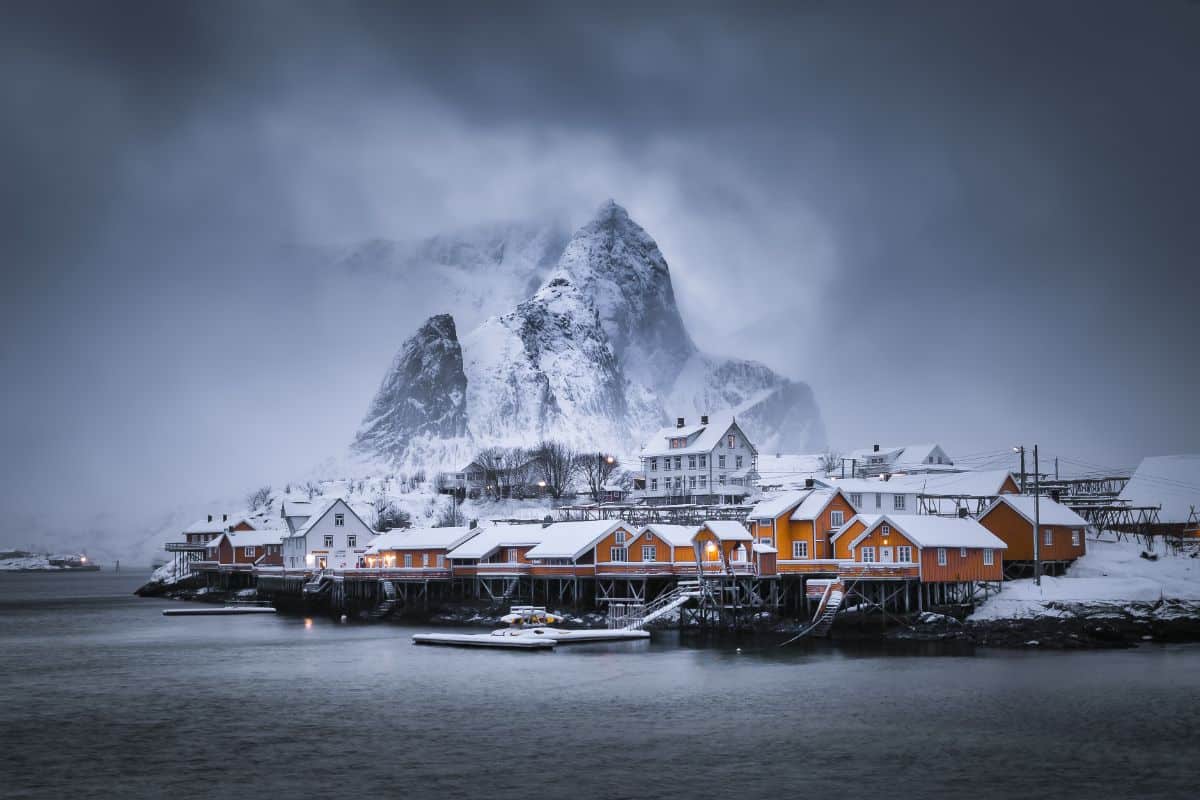
Nearby Sakrisøy rorbuer on a stormy winter day
Visiting Lofoten In Winter
In the winter, Lofoten transforms into a captivating landscape that alternates between enchanting beauty on the good days and challenging harshness on the not-so-good days.
In good weather, the archipelago resembles scenes from a winter wonderland. The air is crisp, and the snowy mountains reflect the soft glow of daylight or the magical Northern Lights dancing across the sky.
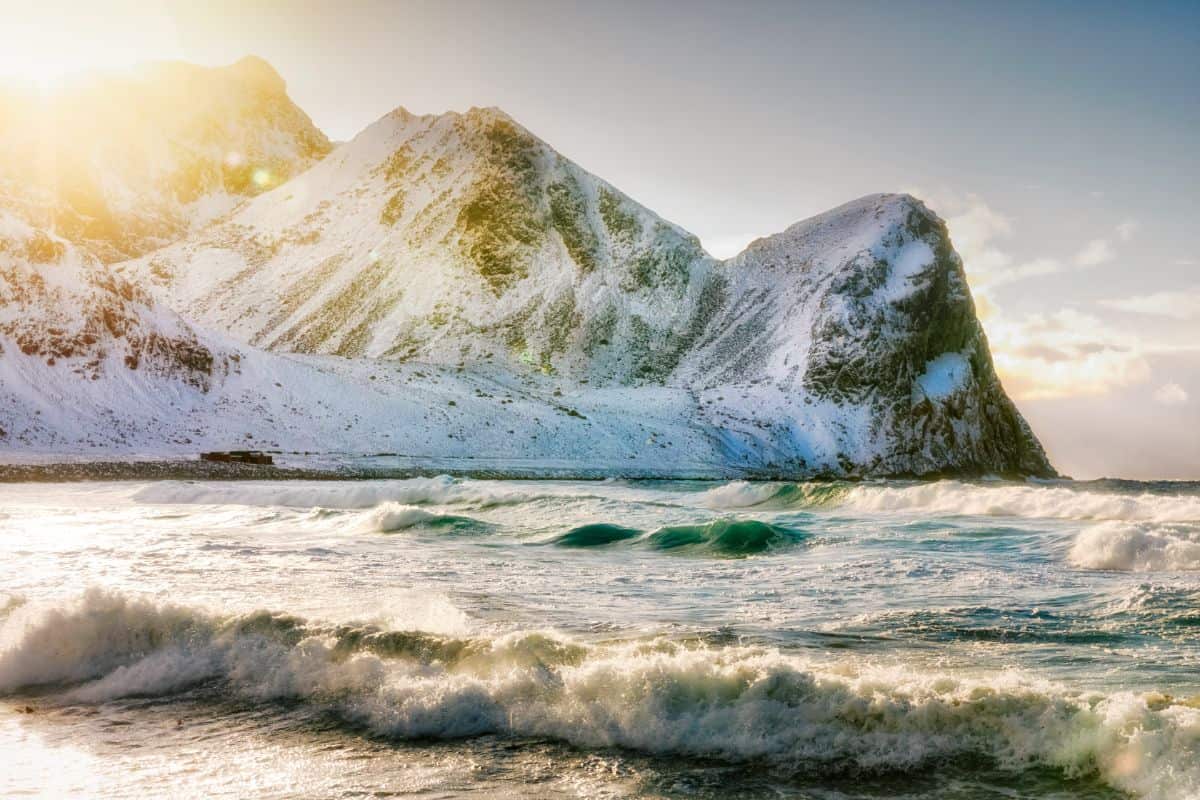
If you are lucky with the weather, you can experience beautiful sunny days when Lofoten looks like it’s straight out of a fairy tale.
However, every now and then, Lofoten exhibits its raw, untamed nature. During blizzards, the wind whips through the islands, making it difficult even to open the door of your house. Venturing outside becomes a battle against icy gusts, and the wind might knock you off your feet.
We often meet tourists who tell us how fortunate we are to live in the paradise that is Lofoten. Yet, it takes a severe winter storm for tourists to realize the locals are not only lucky but also pretty tough to deal with such extreme weather.
We genuinely hope you encounter both the enchanting winter wonderland and the fierceness of a proper winter storm! 🧊🌨️🌫
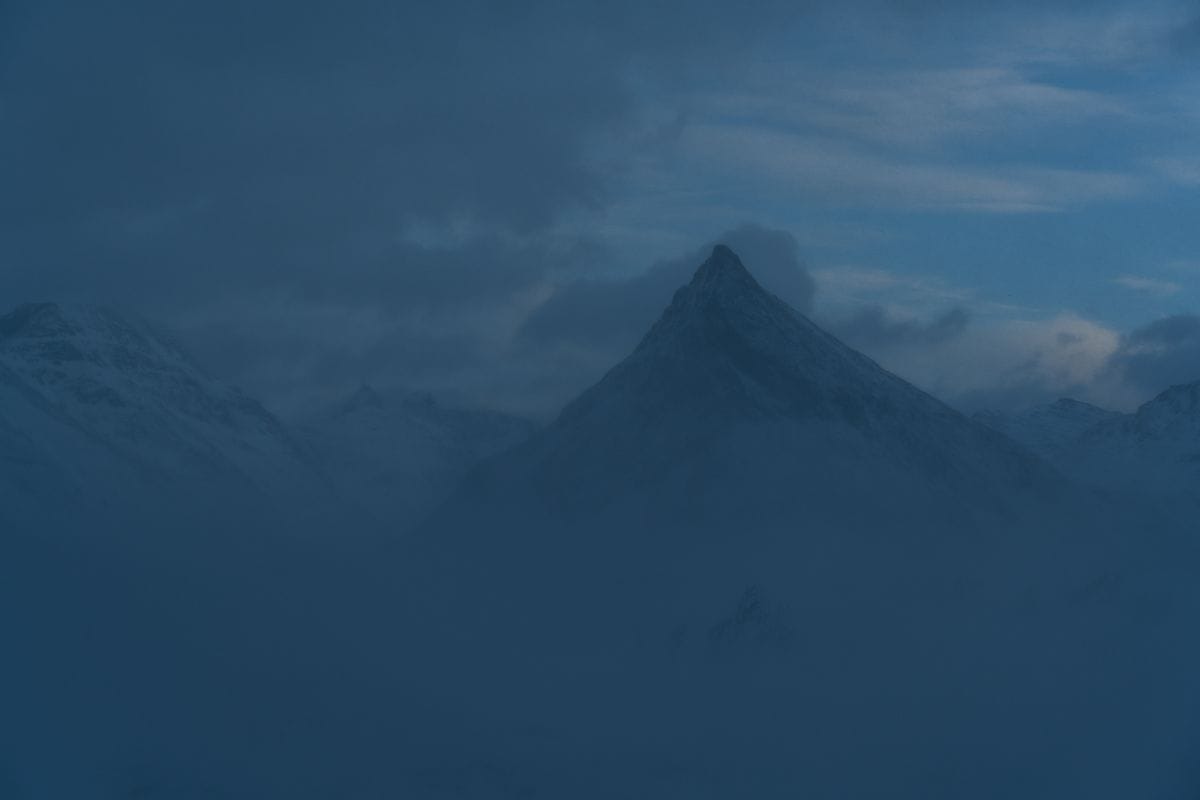
But there are also days with limited visibility.
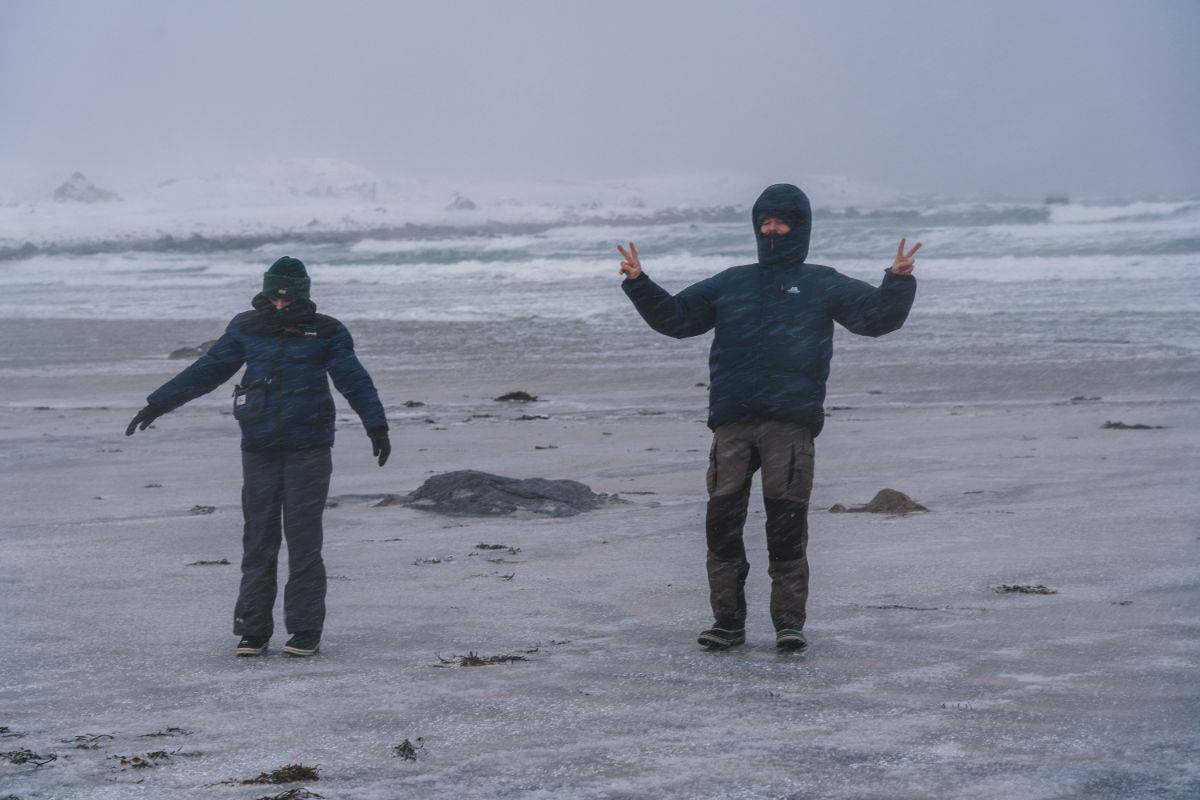
Or strong winds.
#2 Lofoten winter season runs from November to April
In Lofoten, winter hangs around from November to April, giving you an extended snowy experience. While most places consider December, January, and February the prime winter months, winter has its own schedule here in the north.
November feels more like winter than autumn, and even when March comes around, it’s still very much a winter wonderland. Don’t expect spring to burst onto the scene in April either – winter likes to linger a bit longer in these parts of the world.
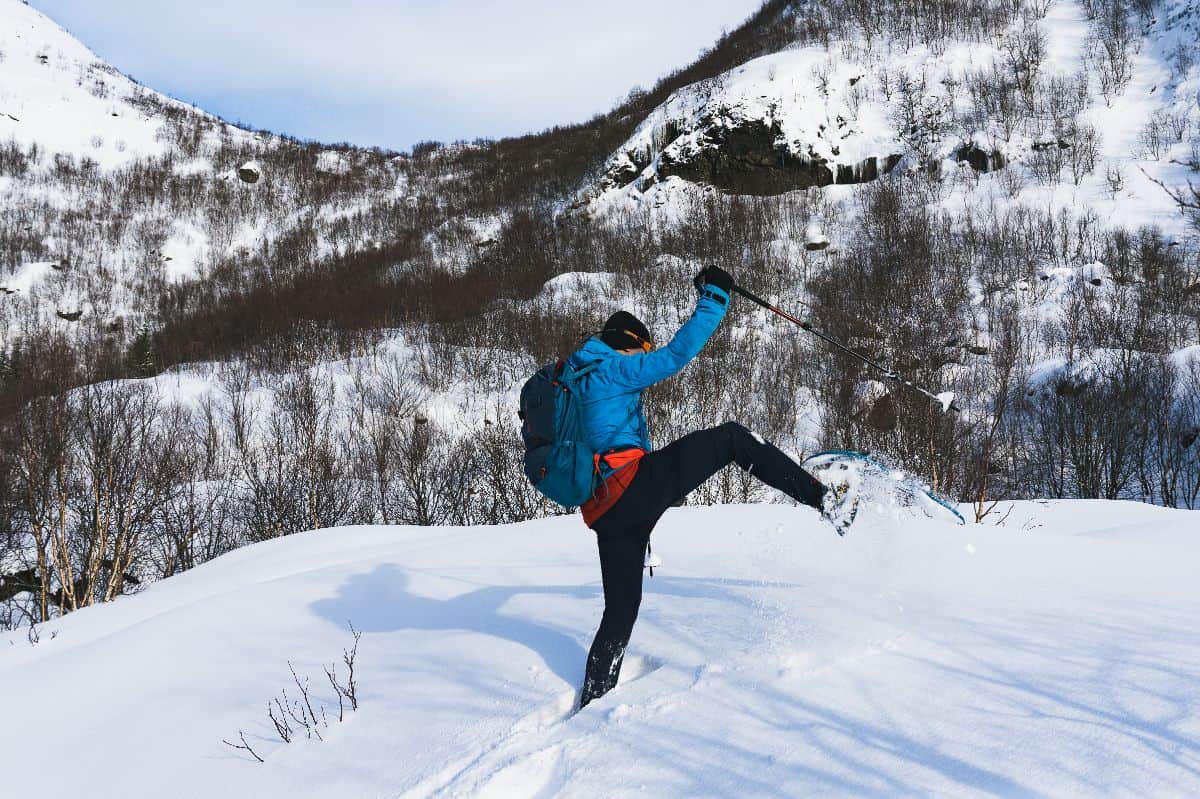
Snowshoe hiking in Lofoten in early April
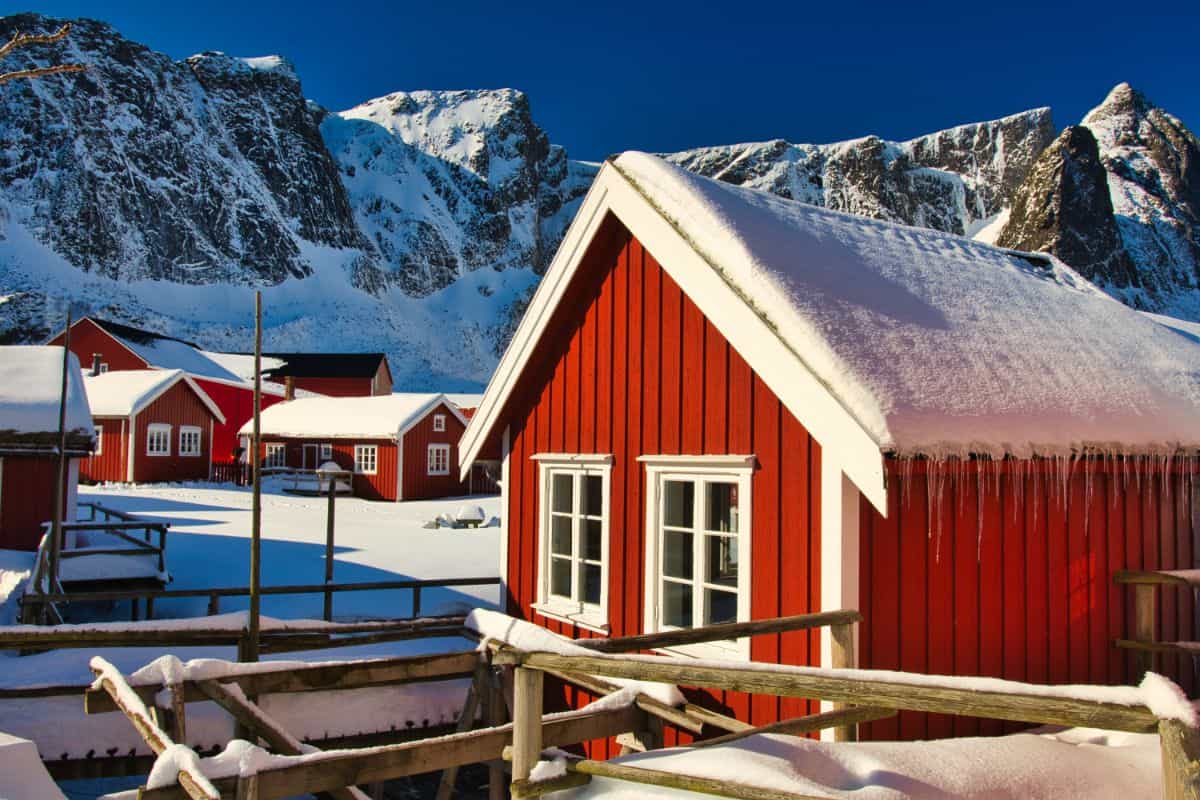
Early April 2022 in Reine
Average Winter Temperatures In Lofoten
The Gulf Stream is a warm ocean current originating in the Gulf of Mexico, flowing across the Atlantic Ocean towards Europe’s northern regions. It plays a significant role in influencing the average winter temperature in Lofoten.
While Lofoten is situated well above the Arctic Circle, the Gulf Stream helps keep the winter average temperatures relatively mild for its high northern location.
Without the Gulf Stream, Lofoten would experience significantly colder and harsher winters.

The picture shows the temperature distribution in Svolvær throughout the year 2022. It’s evident that the winters in Svolvær are relatively mild.

The mild winter temperatures in Lofoten, along with the nearly constant wind, create ideal conditions for fish drying.
The Snow Situation In Lofoten In Winter
Before January, the snow situation in Lofoten can be a bit unpredictable. The snow tends to come and go. Once January arrives, it usually decides to stick around, painting everything in a beautiful white coat.
However, don’t be surprised if, now and then, warmer temperatures decide to make a cameo, causing some snow to bid a temporary farewell.
In the pictures below, you can see that in 2022 there was pretty much no snow at the end of February and beginning of March. The year before, there was no snow at the end of February and also at the end of March before it snowed again in April.

The amount of snow in Lofoten in 2021

The amount of snow in Lofoten in 2022
#3 Lofoten is world-famous but still a remote small community
Lofoten is a world-renowned destination famous for its stunning natural beauty, picturesque fishing villages with vibrant red cabins called rorbuer, and outdoor activities like hiking, fishing, kayaking, or skiing.
The archipelago spans a considerable area, comprising four main islands and numerous smaller ones. However, the population of Lofoten is modest, with approximately 25,000 residents scattered across the islands.
The largest town, Svolvær, is home to around 5,000 people, while the second-largest, Leknes, boasts roughly 3,500 inhabitants. Even the charming fishing villages showcased in magazines, such as Reine or Henningsvær, have fewer than 600 permanent residents.
While our small community prides itself on an impressive array of restaurants, cafes, and activities, we’re not exactly New York.
So, when you visit, especially in winter time, revel in the intimate charm of Lofoten, but don’t expect the bustling services of a big city like Oslo or Tromsø. Especially during the winter season 😊🏡
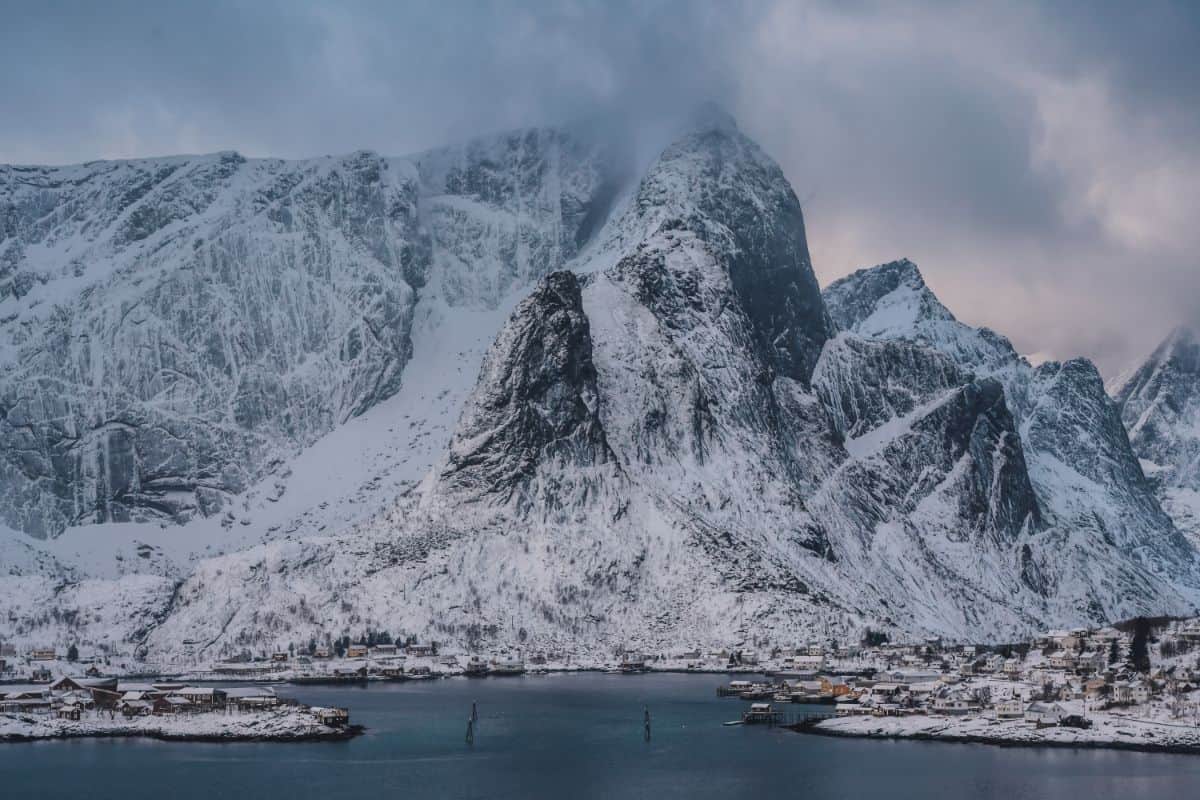
The villages in Reinefjorden are scattered over several small islands.
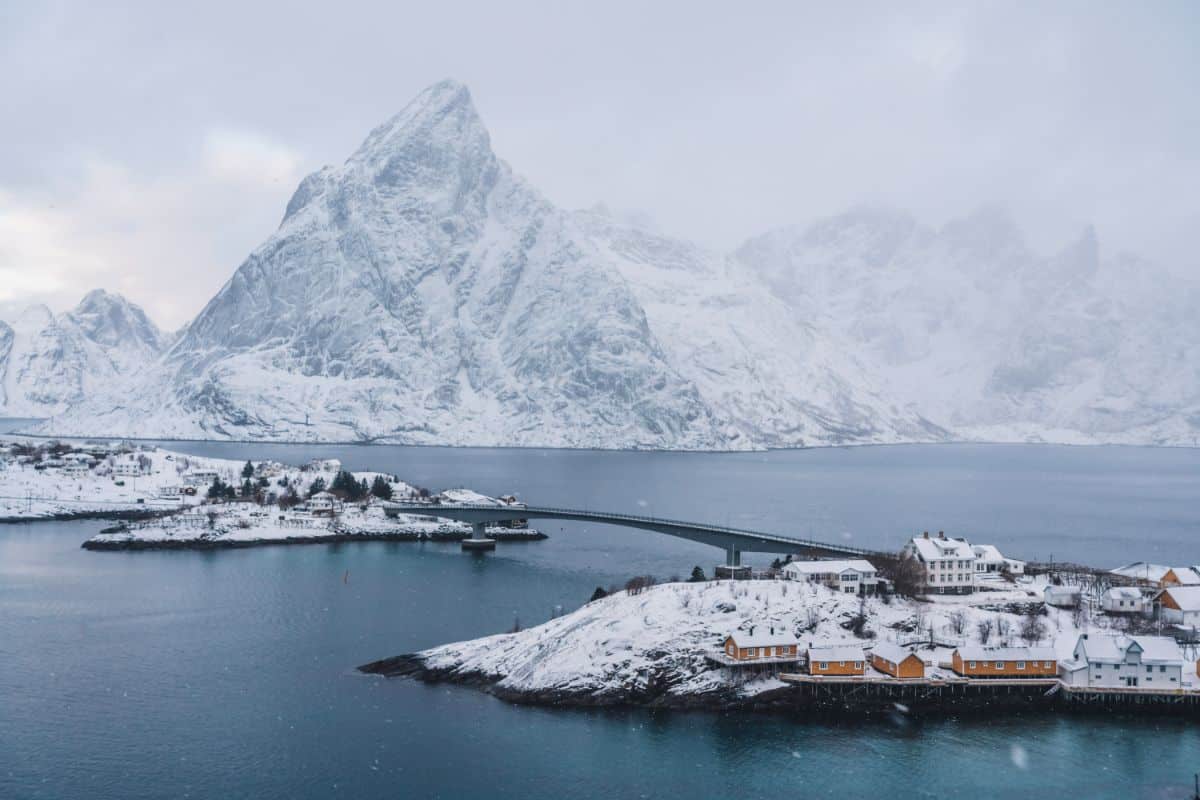
The islands are connected by one-lane bridges, which can be particularly problematic on some winter days when they become icy, leading to cars getting stuck there.
#4 Be prepared for short daylight hours
When visiting Lofoten in winter, prepare for some short days. From around early December to January, the region experiences polar night, a dark period lasting about five weeks.
During this time, the sun doesn’t make it above the horizon, but it’s not completely dark. Instead, it’s like a prolonged twilight, creating a cozy, dusky atmosphere.

Even after the sun sets, there is a prolonged period of beautiful blue light.
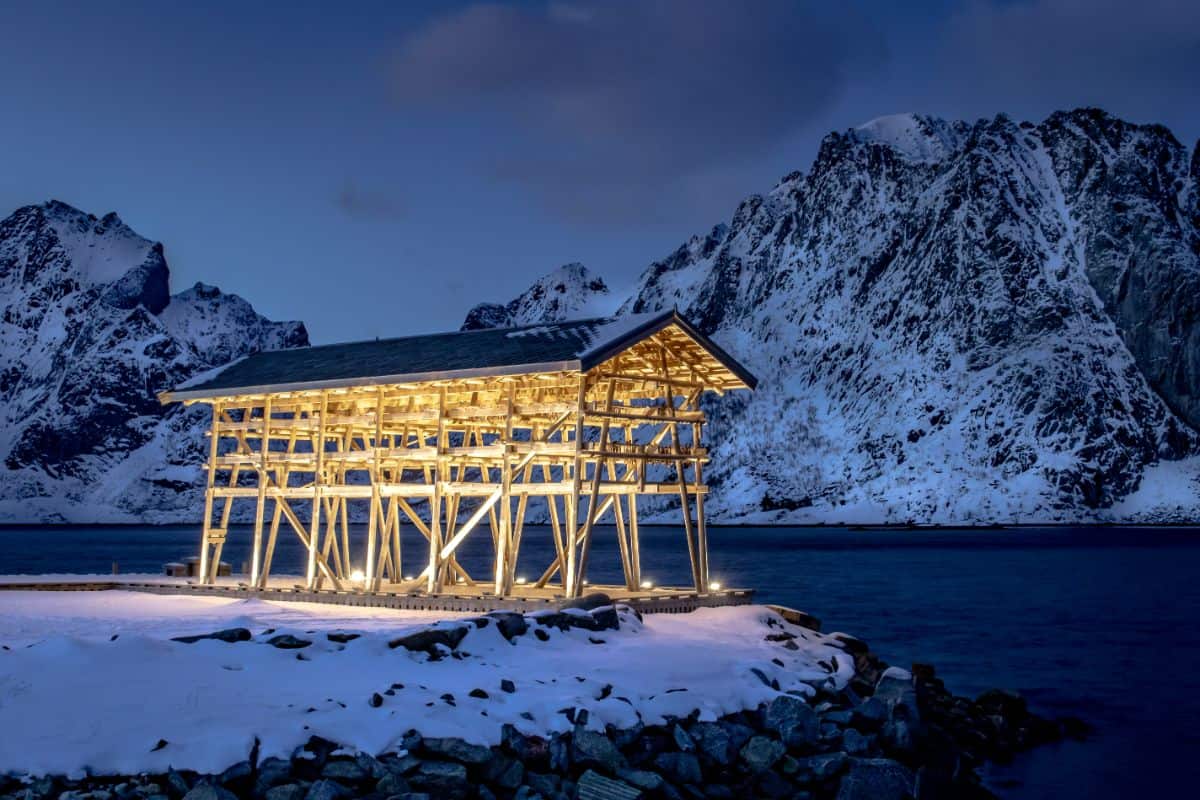
During the polar night, we have a couple of hours each day of this blue light, even though the sun does not rise above the horizon.
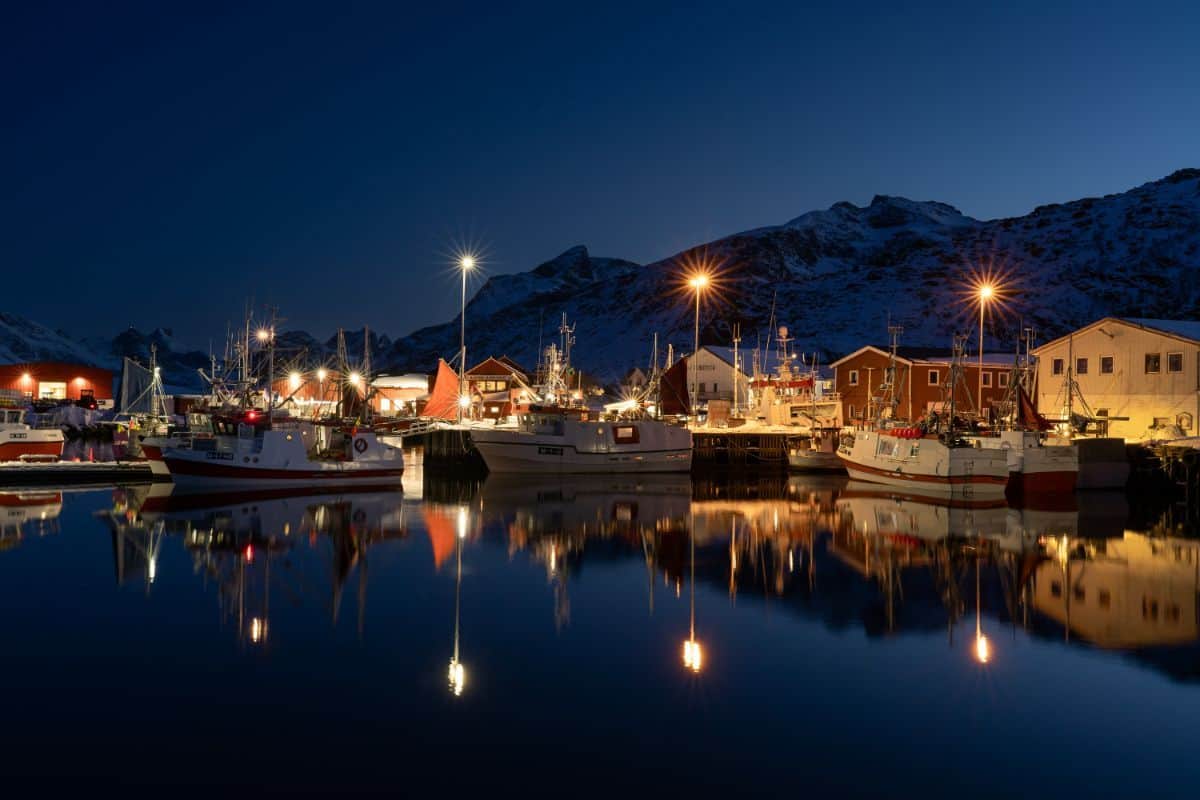
Even after the sun has set, there are still opportunities to capture beautiful pictures.
Let’s break down the daylight hours for different dates. Remember to plan your adventures during these daylight hours to make the most of Lofoten’s beauty.
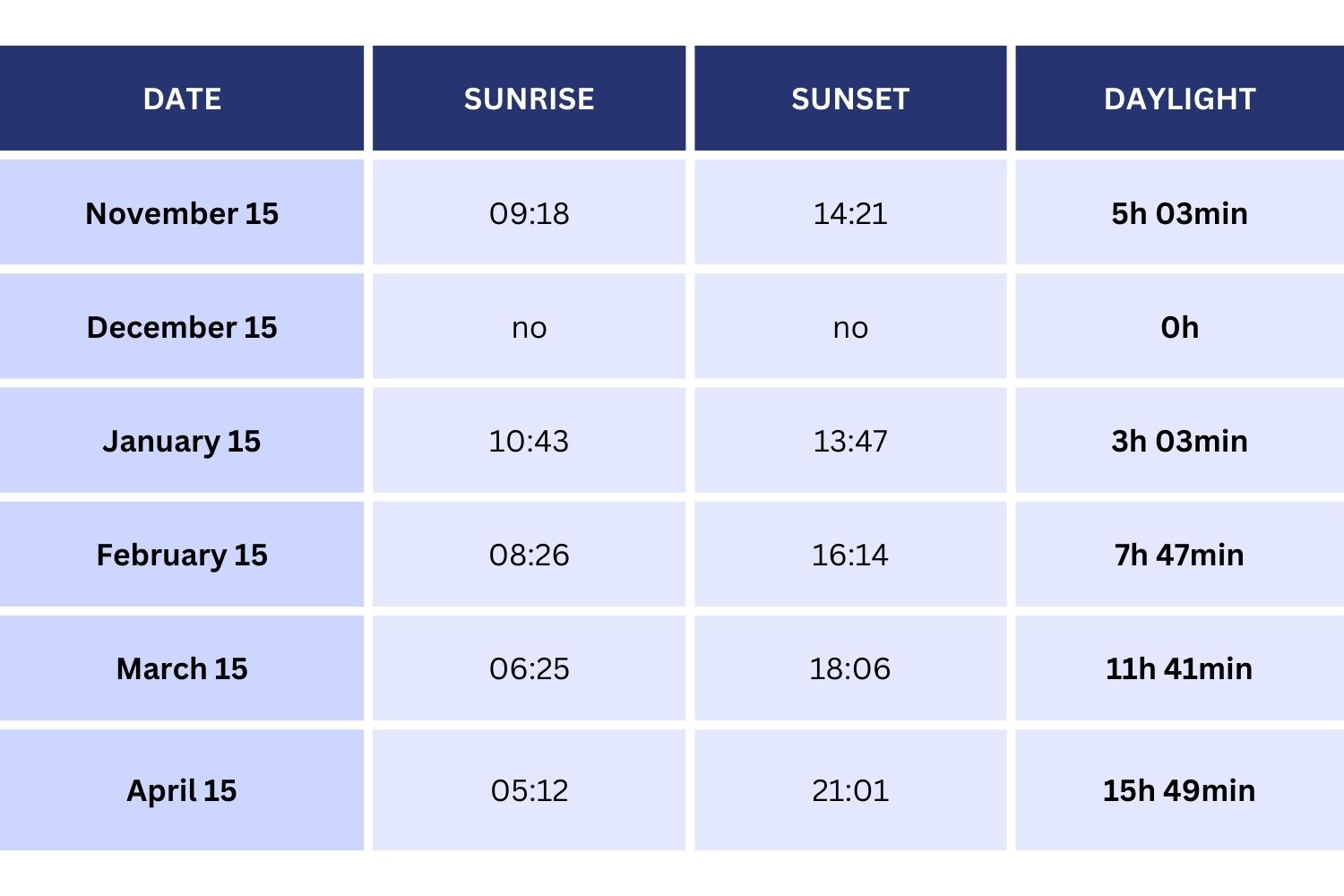
#5 The weather in Lofoten in winter is unpredictable
In Lofoten’s winter, expect the unexpected. You might be blessed with stunningly clear and sunny days, revealing Lofoten’s beauty in its finest light. Or you might experience a symphony of snow, rain, and wind, and sometimes, all three at once.
Arriving in Lofoten in winter demands the right mindset and preparation, especially when it comes to the ever-changing weather. Make sure to set realistic expectations, pack the appropriate clothing and equipment, and, most importantly, be mentally prepared to adapt your plans if the weather takes an unexpected turn.
While the unpredictable weather can be challenging, it also adds a thrilling sense of adventure to your journey. Dress in layers, keep your camera handy, and be prepared to embrace whatever Mother Nature throws your way.
However, consider extending your stay for safety reasons in case of adverse conditions!
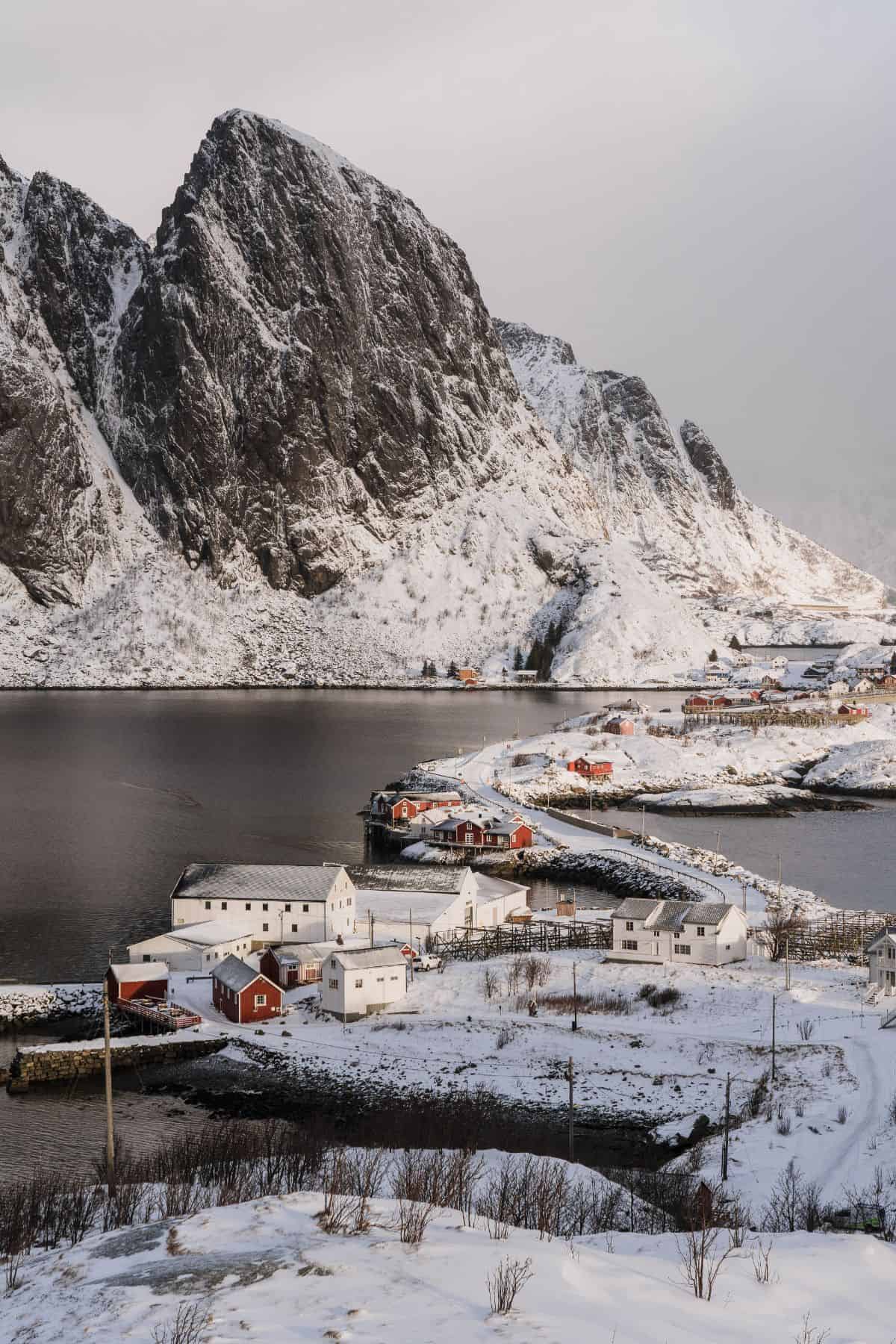
Villages in Reinefjorden
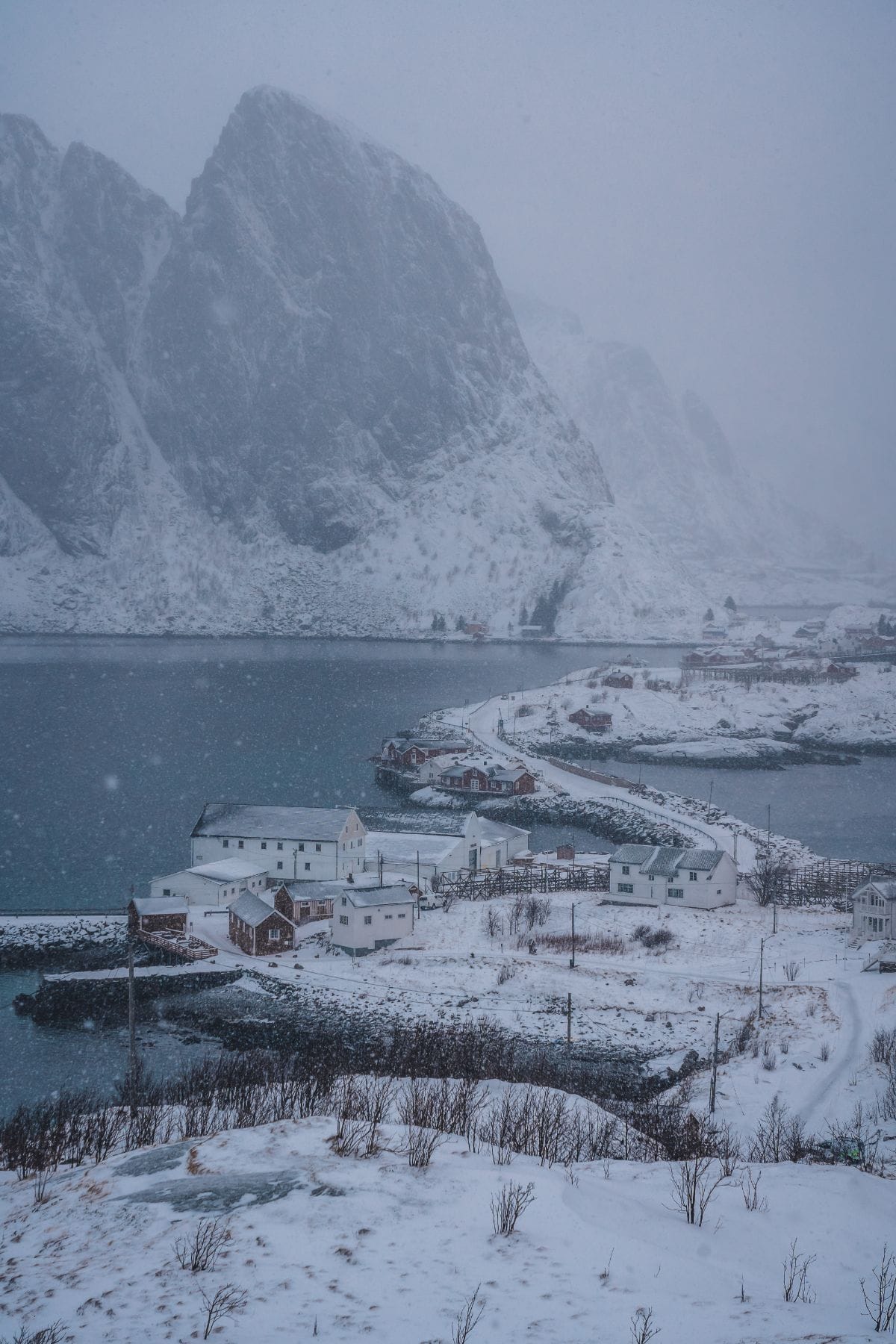
Same pictures taken about 10 minutes later
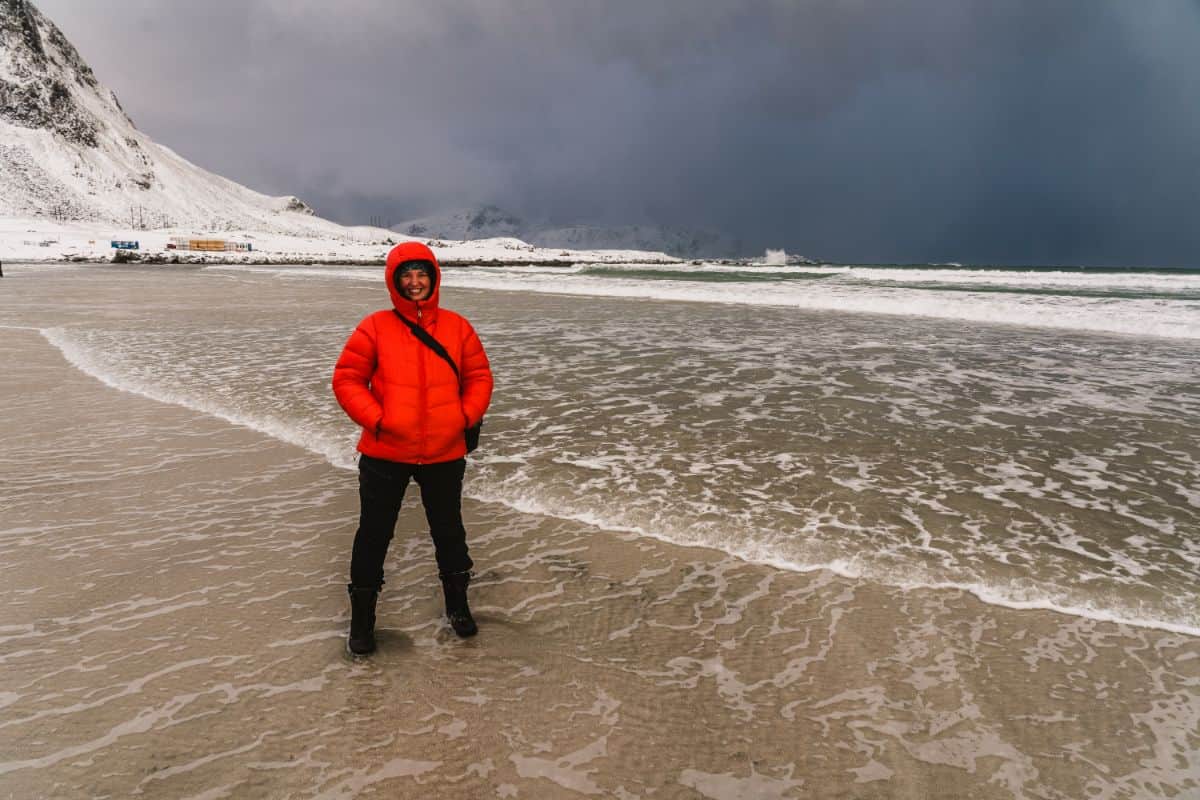
Winter day on Skagsanden Beach

The same location, about 10 minutes later, when walking became difficult due to the wind.
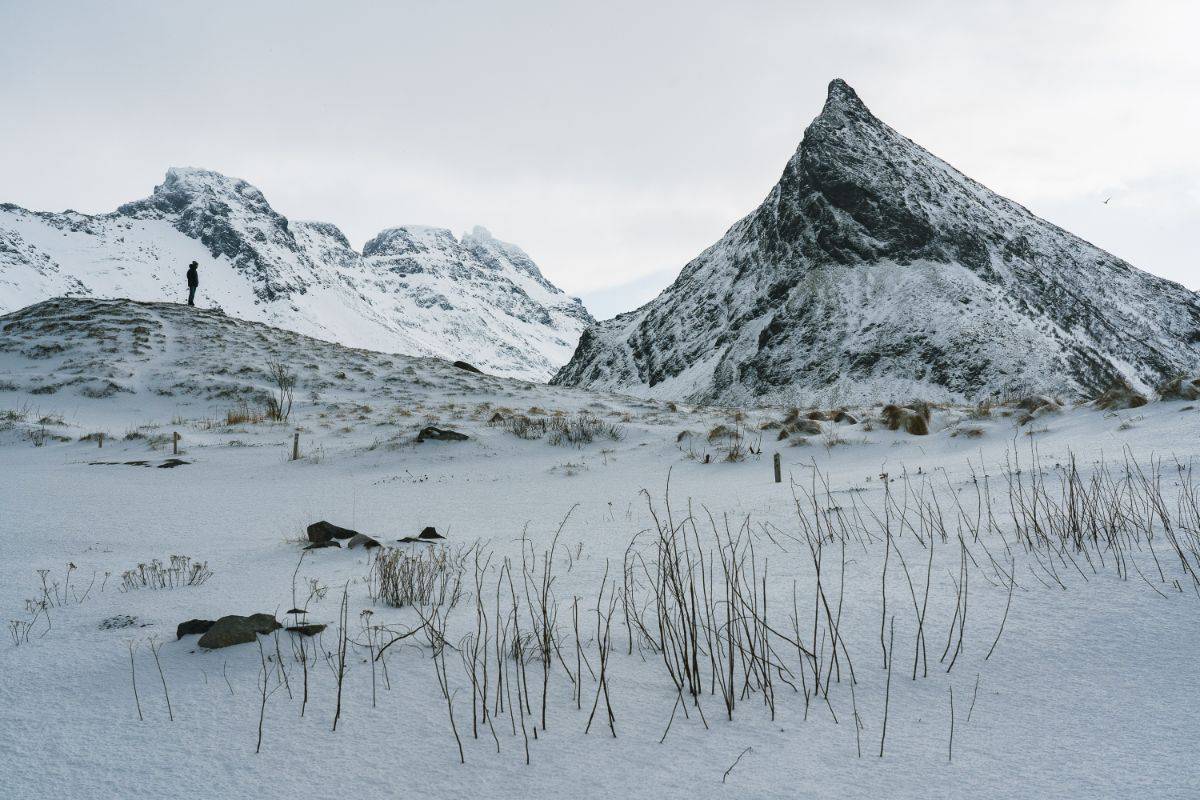
Winter walk in Fredvang with a view to Mt Volandstinden

The same place, about 30 minutes later, with close to zero visibility and gale-force winds.
#6 If you have a car, it will be much easier to explore Lofoten
I wish I could advise you to skip renting a car and rely on public transport in Lofoten in winter. I really do.
However, traveling by public transportation in Lofoten in winter can be a bit challenging.
While there are buses that run along the main road E10 several times a day, their frequency might not always align with your schedule.
While I would love to use public transport more in Lofoten and recommend it to others, the current options are simply insufficient.
MY ISSUES WITH PUBLIC TRANSPORT IN LOFOTEN
😔 For instance, when I finish work at the tourist information in Ramberg at 17:00, the earliest bus connection home to Sørvågen is at 22:13.
😔 On weekends, I can’t use the bus to get to work (which starts at 10:00) because there’s no bus until 12:00.
😔 Similarly, let’s consider hiking Ryten, one of the most accessible and safe mountains in Lofoten that you hike in winter. The nearest bus stop is about 4 km away from the trailhead. After completing the hike, there’s no café, restaurant, or any place in Fredvang or along the way back to the bus stop where you could sit and warm up while waiting for your bus to arrive. Plus, you either make the bus at 16:25 or you will wait until 21:40.
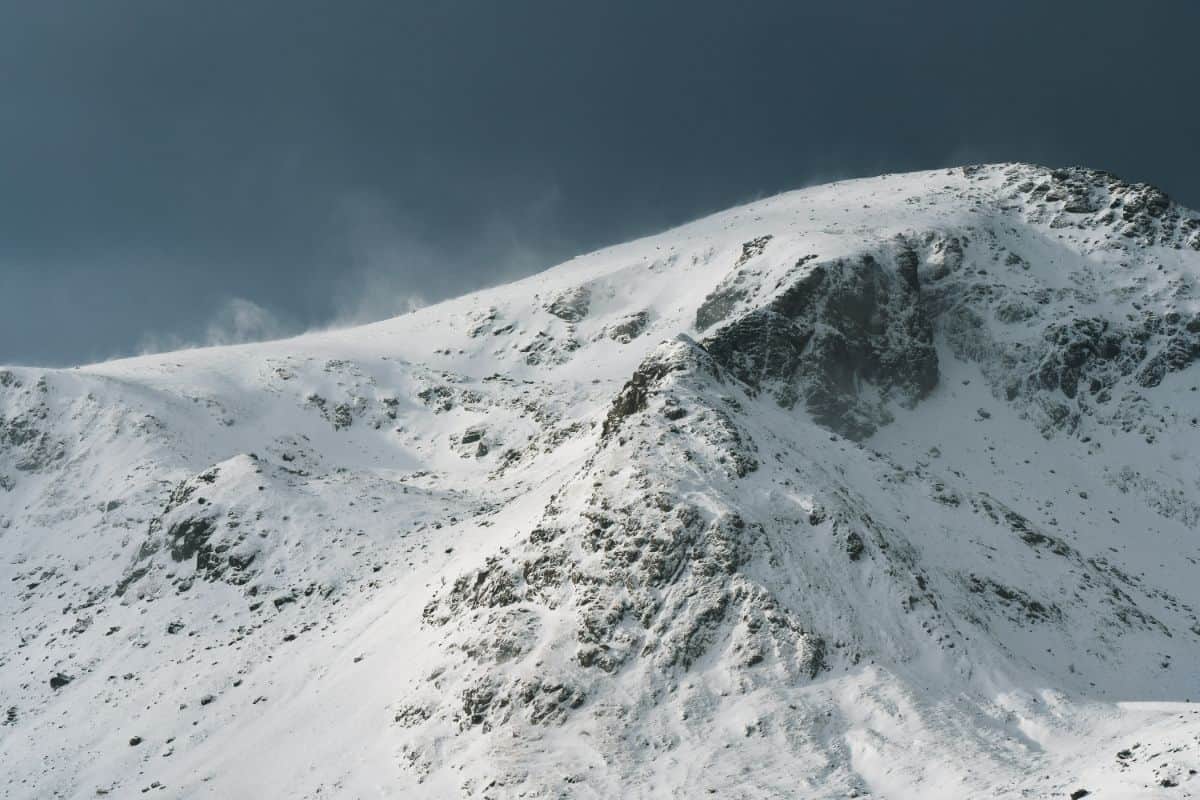
Strong winds on Mt Ryten



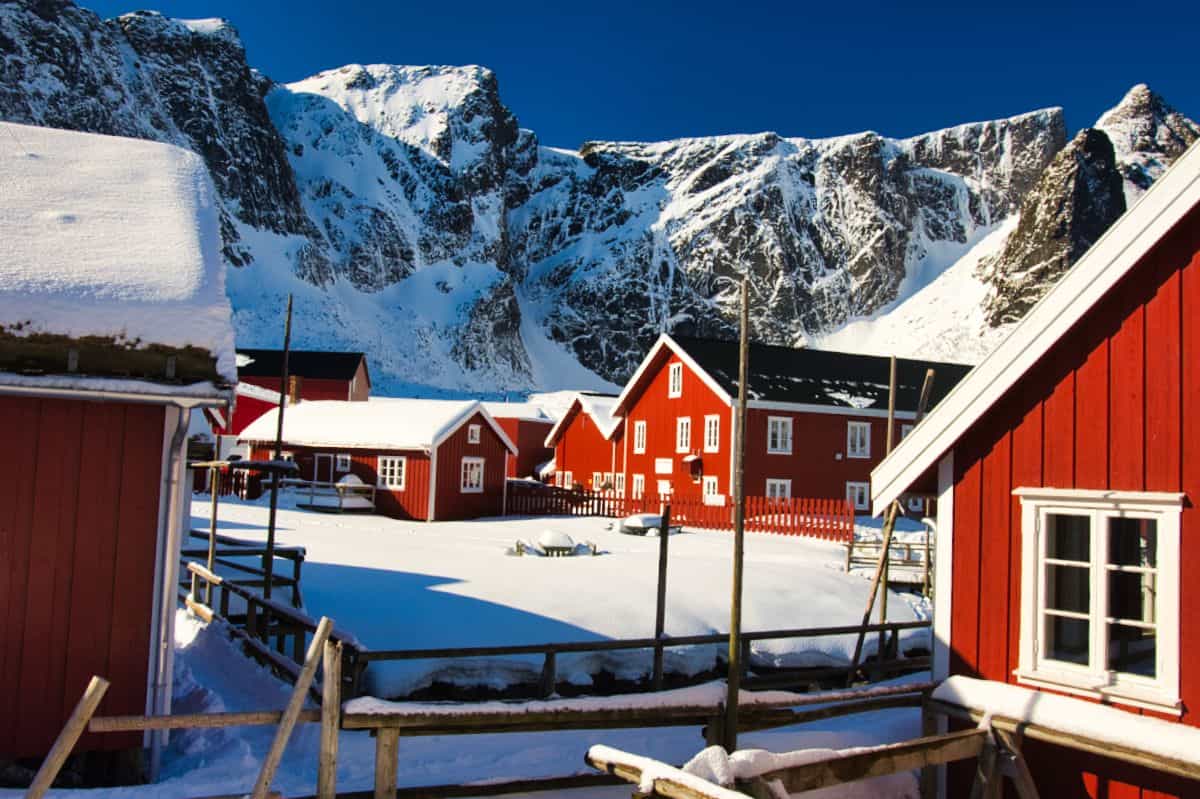
























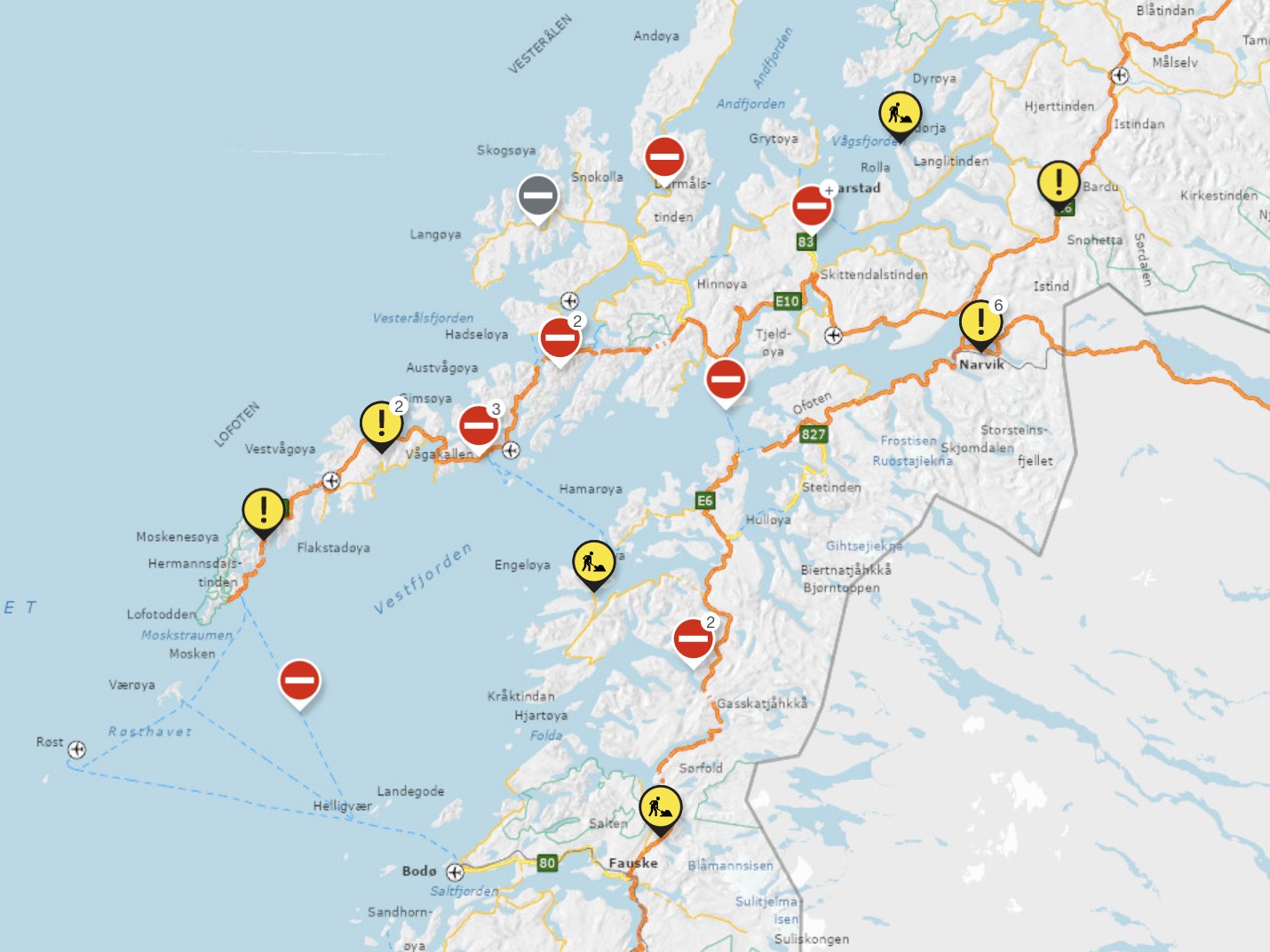
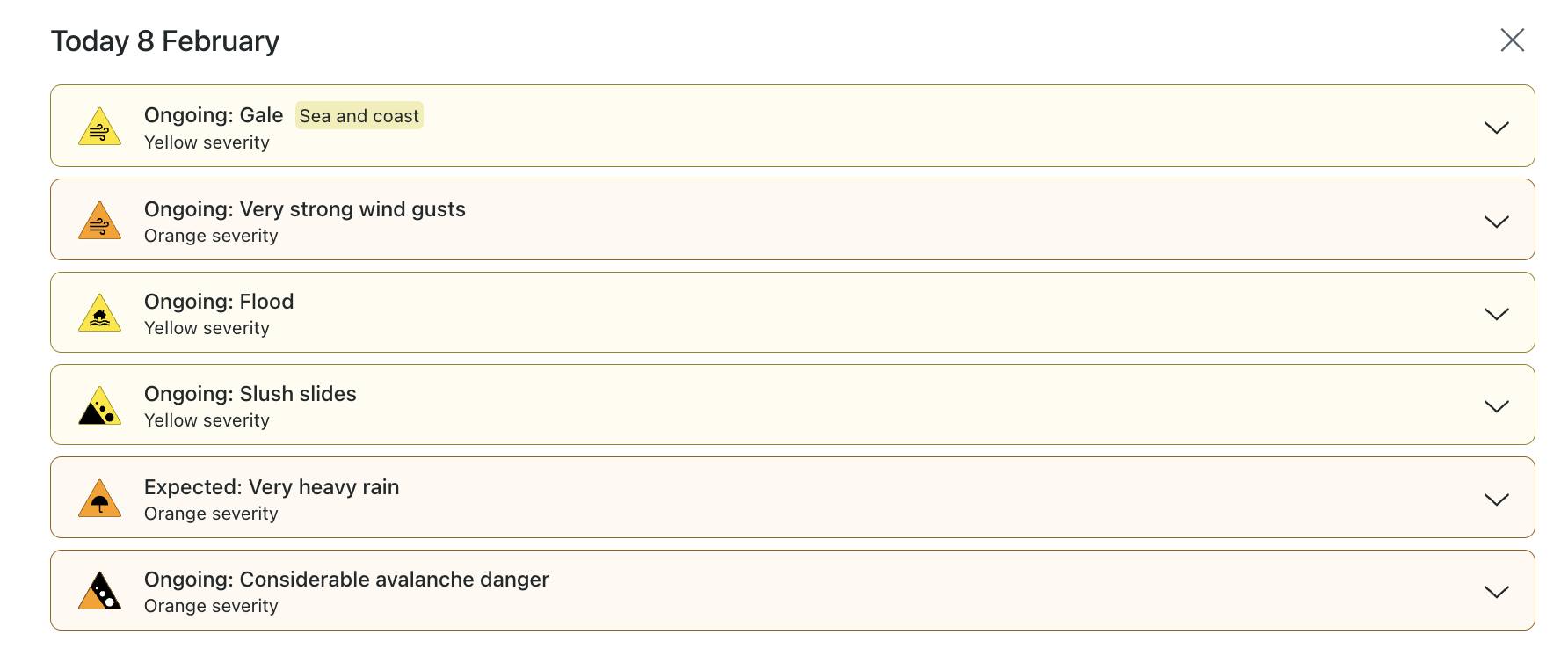
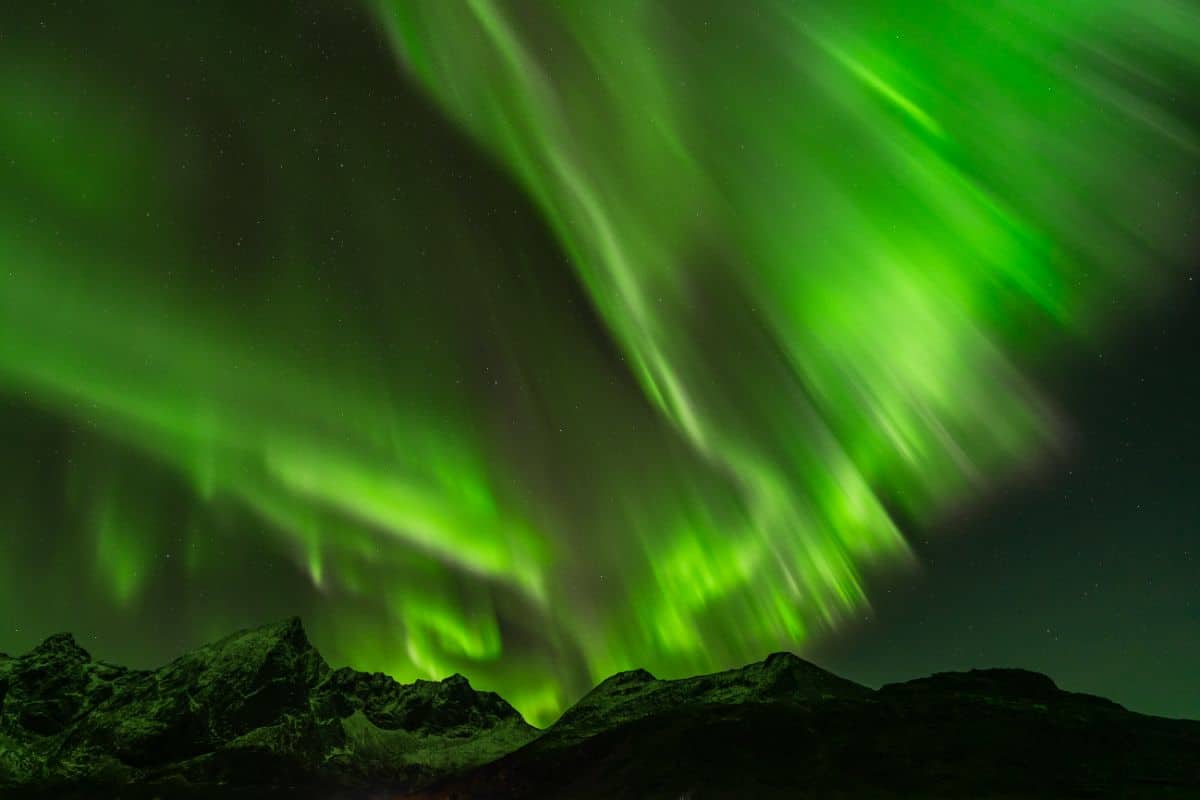
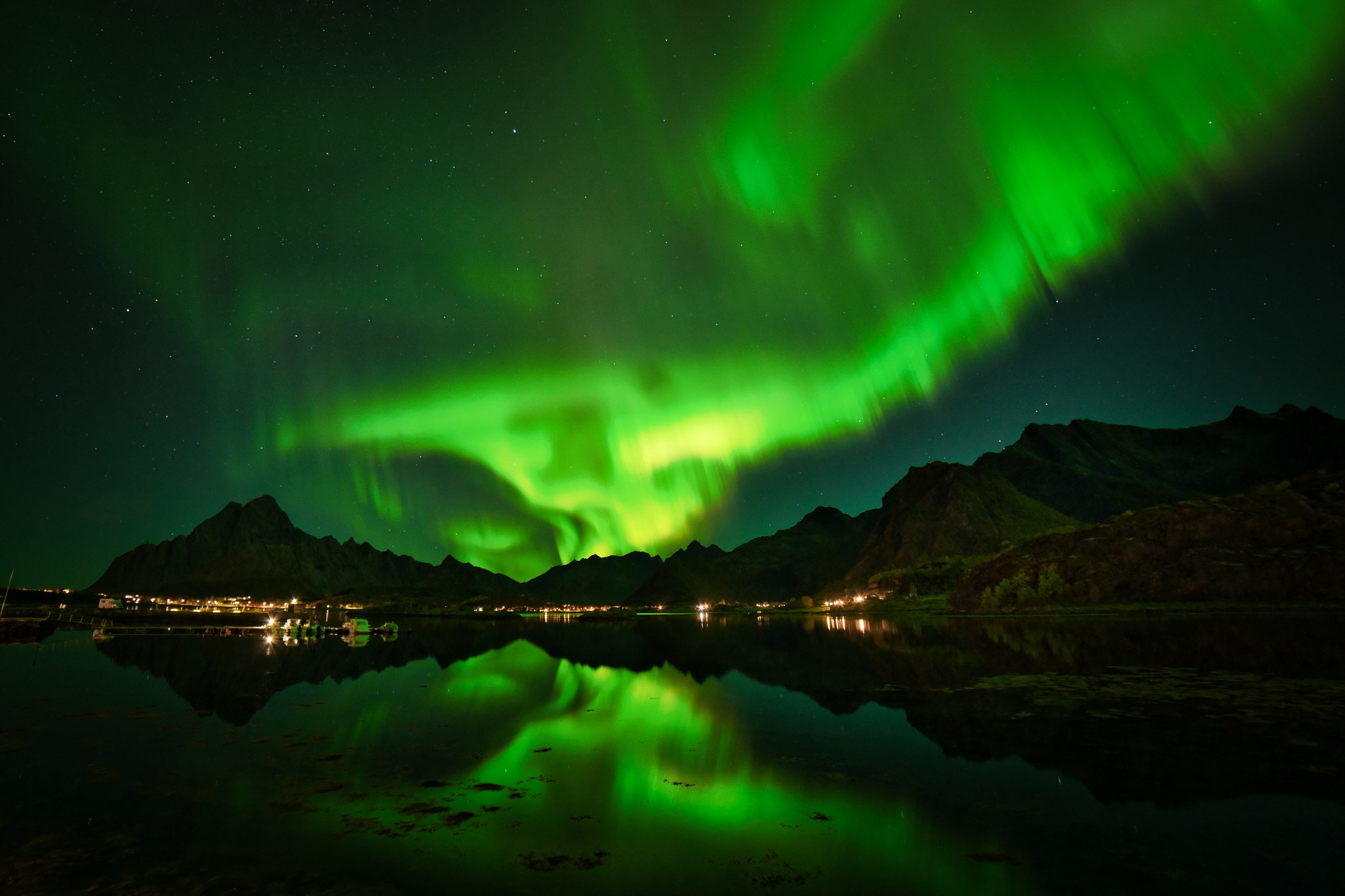



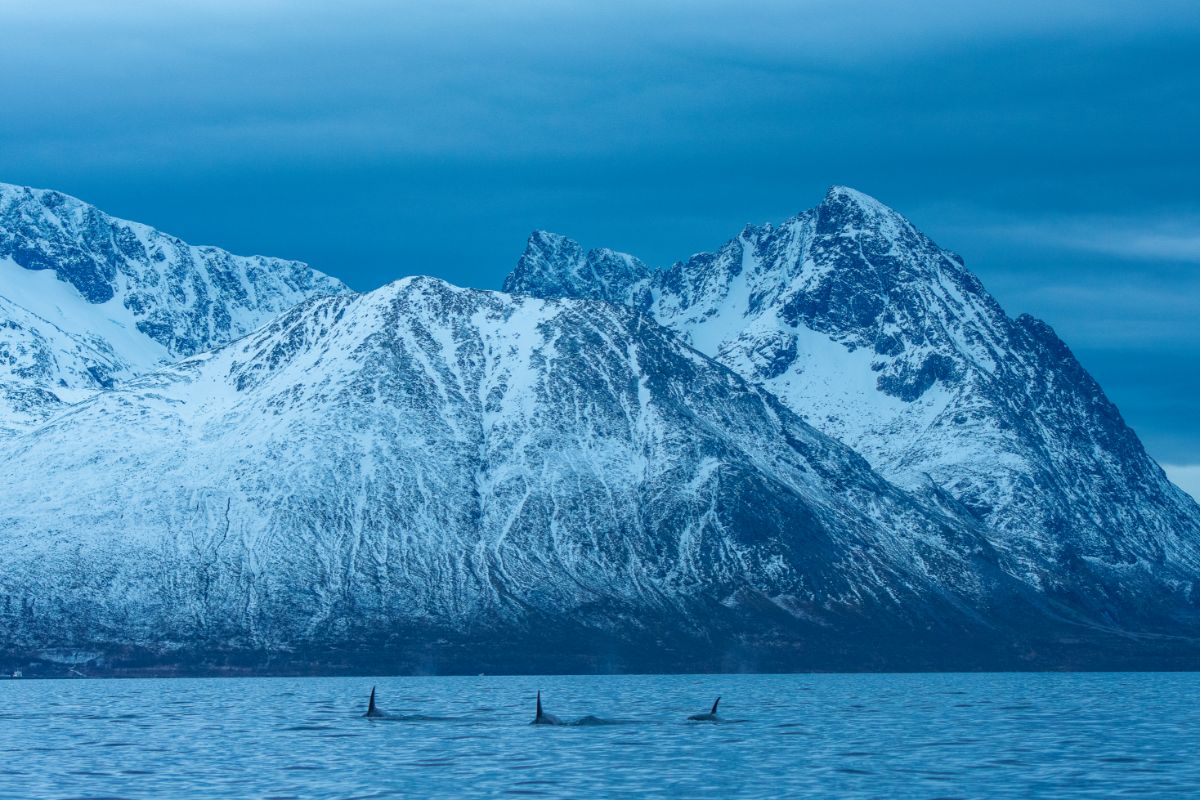

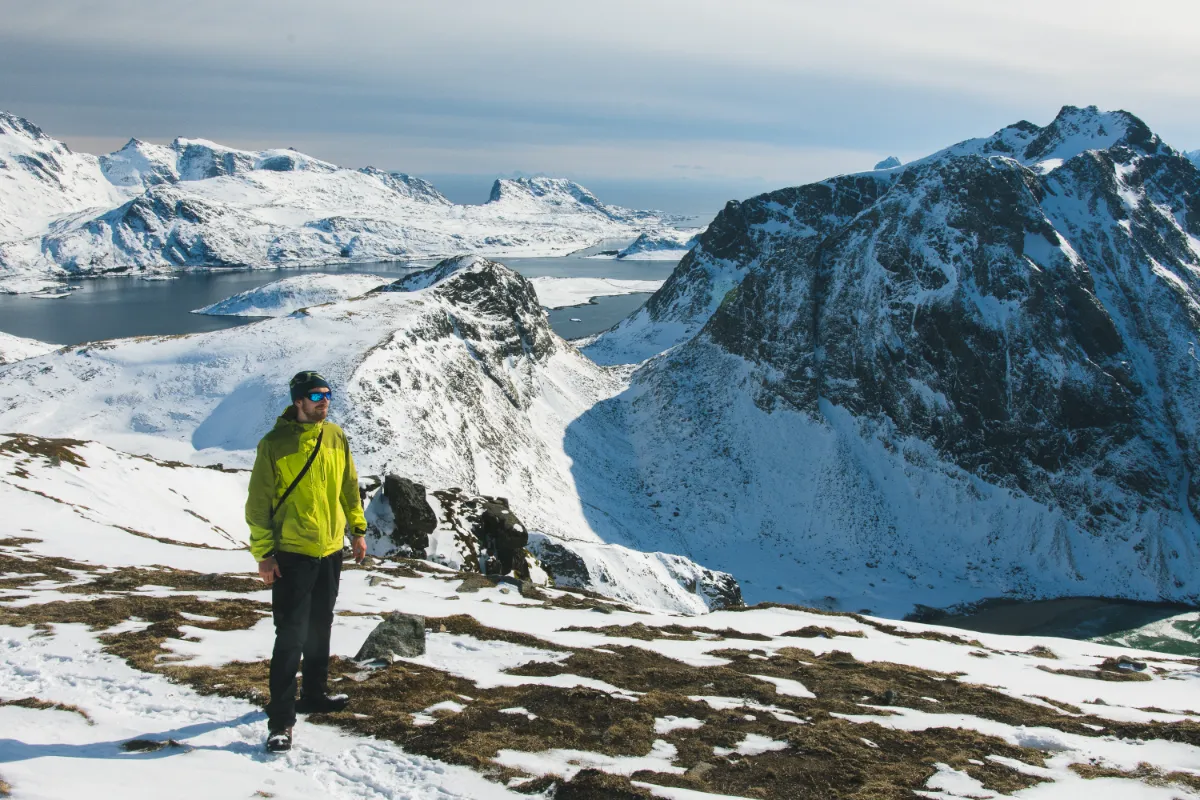

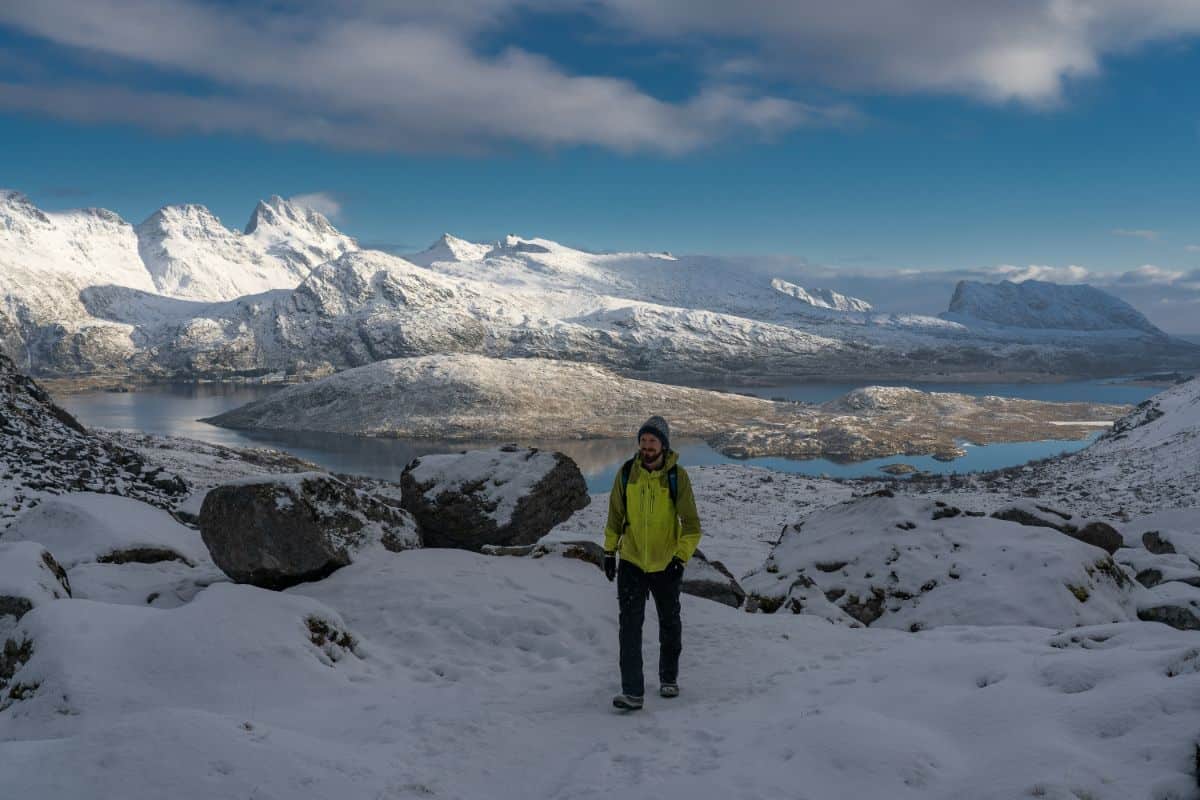
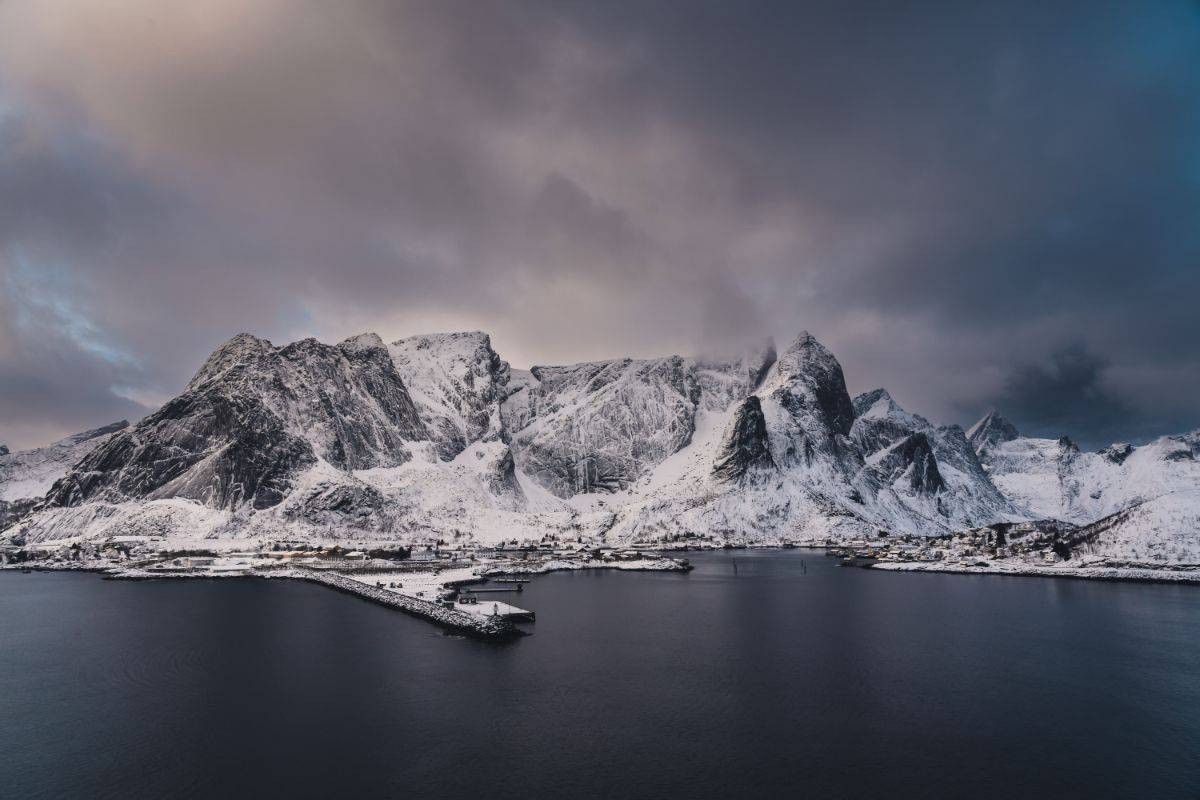
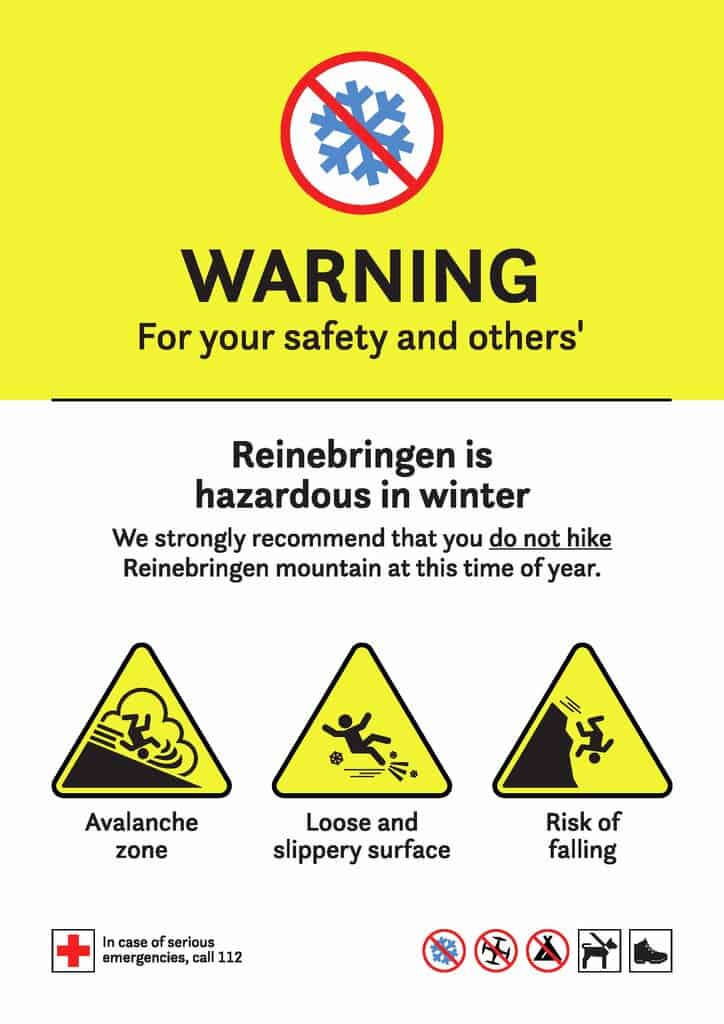
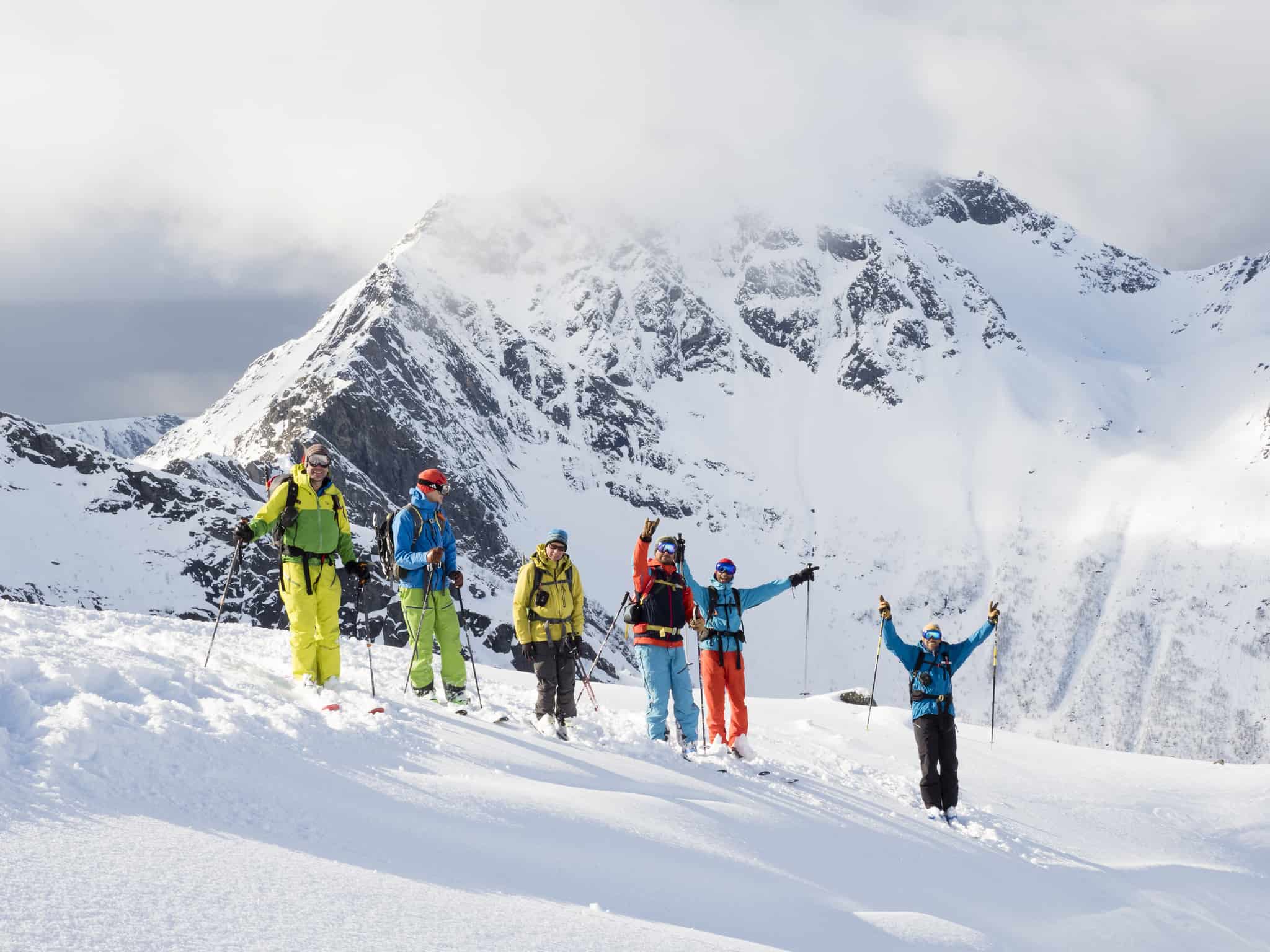

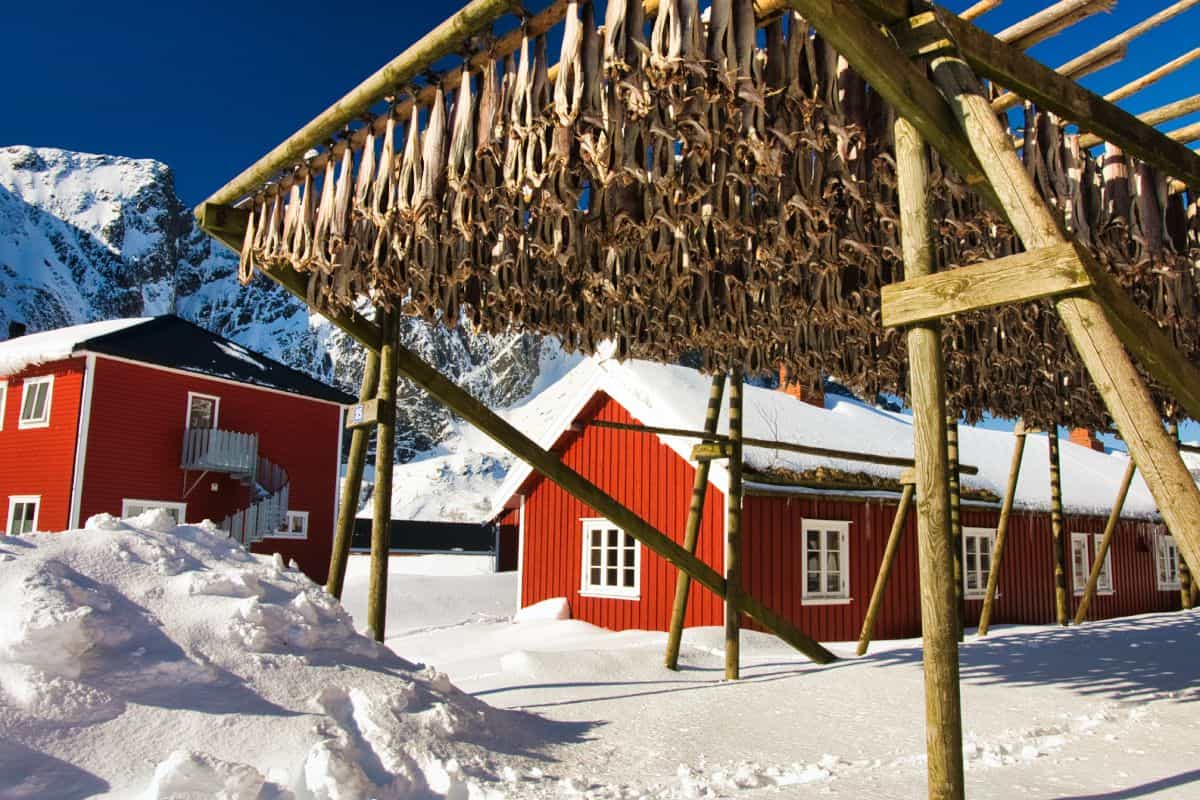



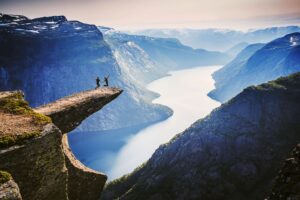

One Response
Beautifully written article.
Considering travelling to Tromso and Lofoten this Christmas, 4 days in Tromso and 3 days in Lofoten, I know it’s not the best time of the year for Lofoten, but I have to factor in my son’s school vacation, also I want my wife and son to the see the aurora borealis.